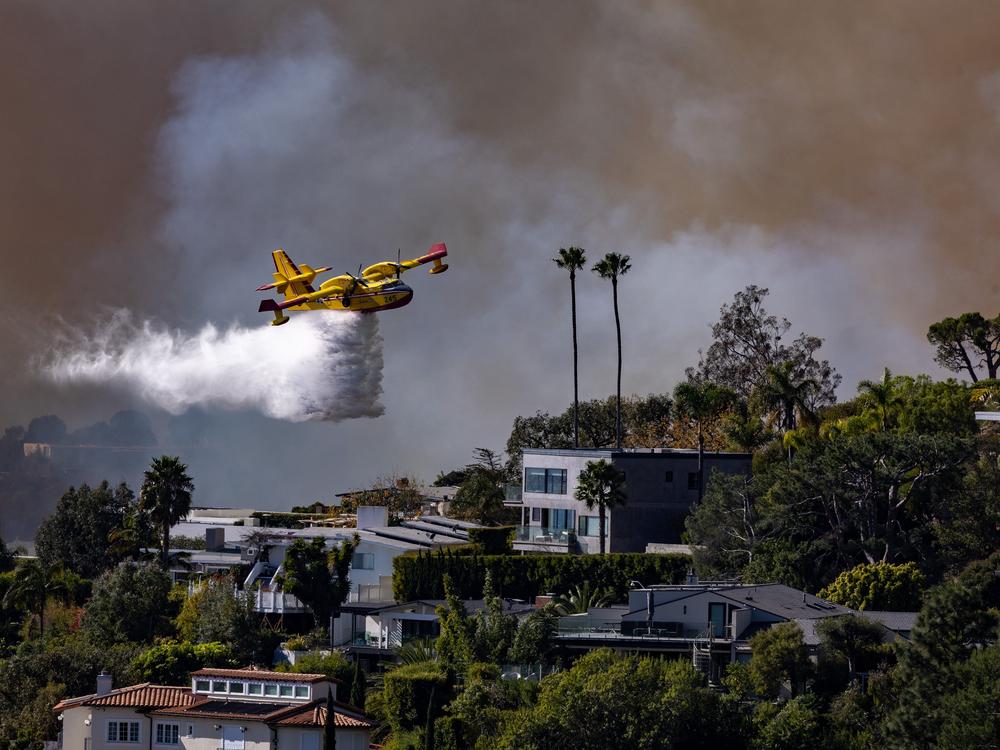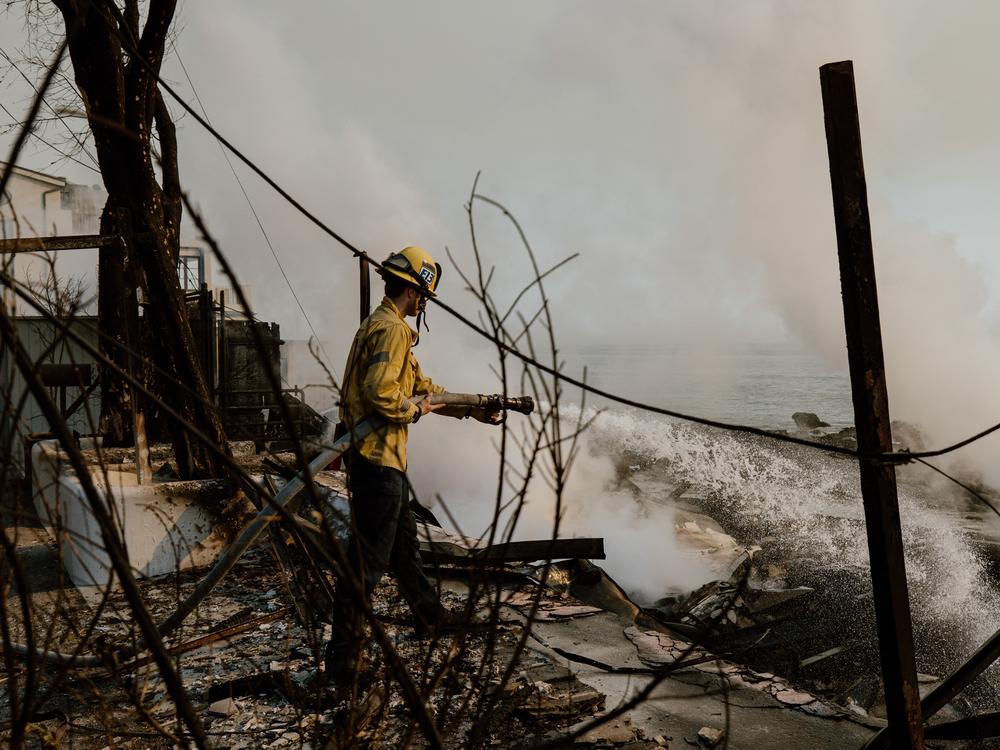Section Branding
Header Content
'The hydrants up here are dead.' Radio traffic shows how LA firefighters lost water
Primary Content
On the morning of Jan. 7, a firefighter near the Pacific Palisades neighborhood of Los Angeles observed a 10-acre brush fire along a ridgeline and sent out a warning.
"Just to give you guys a heads up," he radioed to other first responders. "This has the potential for 200 acres plus."
The Palisades fire and the other fires that followed have since burned down more than 40,000 acres — an area three times the size of the island of Manhattan. Over a week later, the Palisades fire and the Eaton fire, a blaze that started at the base of the Angeles National Forest, are both still burning.
Water to put out the fires has been scarce. NPR's investigations team transcribed and analyzed more than 2,000 hours of communications from 13 audio feeds streaming LA city and county first responder channels. The feeds were downloaded from Broadcastify.com, a live audio streaming platform. The audio messages chronicle how firefighters first noticed hydrants going dry and how they responded to the emergency with depleted resources.
Just eight hours after that initial call alerting others to the beginnings of a brush fire on the ridgeline, at around 6 p.m., a firefighter in Pacific Palisades mentioned there was a problem with the water.
"If you can get ahold of any sort of public works or DWP (Los Angeles Department of Water and Power) our folks are starting to report that they're running out of water in the hydrant system," he said.
The firefighter said he was radioing from a point near Radcliffe Avenue, no more than a mile from the beach. A dispatcher jumped in to confirm people were trying to fix the problem.
"Copy that, it's being worked on," he responded.
Six minutes later, a firefighter suggested sending a truck that transports water — called a tender — to his location near the Ridgeview Country Estates. The Pacific Palisades neighborhood is minutes from an entrance to the Temescal Gateway Park, an expansive nature reserve that stretches across oak and sycamore canyons.
"With us losing our water up here, is there any way we can get a bunch of water tenders through the city," he asked. "We can keg them up at least in the state area up in Palisades and we can set up a portable hydrant system so our folks can have a shorter turnaround."
A dispatcher said they were ready to try that.
"Yeah, we do have water tender in staging, where would you like them?"
But reaching burning areas with portable water on the ground wasn't easy. As first responders tried to rush to the flames in Pacific Palisades earlier, they had to fight through the throngs of people trying to use those same roads to evacuate.
"You've got gridlock on Palisades Drive," one first responder radioed around midday. "People are driving down both sides."
Nearby, a plane was providing support from the air.
"Super Scoopers, just leaving the fire scene at this time," radioed a first responder.
Super Scooper planes gather water from large bodies of water, like the ocean, to dump on fires. The audio communications show Super Scoopers were helping fight the fire at least as early as 11 a.m. that morning.
But the radio communications that coordinated helicopter aid indicated that by Tuesday evening, conditions were getting increasingly dangerous, even in the sky.
"Operations, HELCO Command. We are going to be grounding all aircraft," someone radioed at around 7 p.m. "Based on the wind conditions right now, we're ineffective and we're not going to compromise safety, so all rotorcraft are going to go back."
Other parts of LA had already began to burn. The Eaton fire started that evening near Altadena, a neighborhood about an hour's drive northeast of Pacific Palisades at the base of the Angeles National Forest. By the early morning on Wednesday, the water appeared to be running out there, too.
"We are now on scene of a structure fire on Altadena," radioed a firefighter just after midnight.
"Copy that, LA. We do not have water," responded another in the area.
By 6 a.m. Wednesday, firefighters in that neighborhood were also mentioning problems with hydrants – just like they had earlier in Pacific Palisades.
"We're having some water supply issues," said one Eaton firefighter. "Some of the hydrants are going dry."
The communications suggest this came as a surprise to those first responders.
"Were you having any issues like that before?" one asked in the channel at around 6:30 a. m.
"No, negative. I haven't heard of anyone having issues with the hydrants. I could see if they can boost the pumps, or it could be the tanks are getting low."
Just past midday on Wednesday, another Eaton firefighter made a dire announcement: "We're up at Lake and Altadena, and all the hydrants up here are dead."
On Jan. 10, California Gov. Gavin Newsom ordered an investigation into how fire hydrants across the city lost pressure and stopped providing water. Los Angeles city officials have said the urban system was never designed for wildfires like Palisades or Eaton; It was designed for smaller problems, like house fires. Yet in a letter Newsom wrote to the Los Angeles Department of Water and Power — one of the utilities in charge — Newsom demanded answers.
A first responder at the scene of the Eaton fire also thought about reaching out to the water company.
"Do we have a rep from the water department to try to work on our water supply issues?" he asked.
But in the meantime, there was only one thing they could do.
"Pick your best targets of opportunity the best you can," responded a firefighter near Altadena. "No water at all. So do your best."


